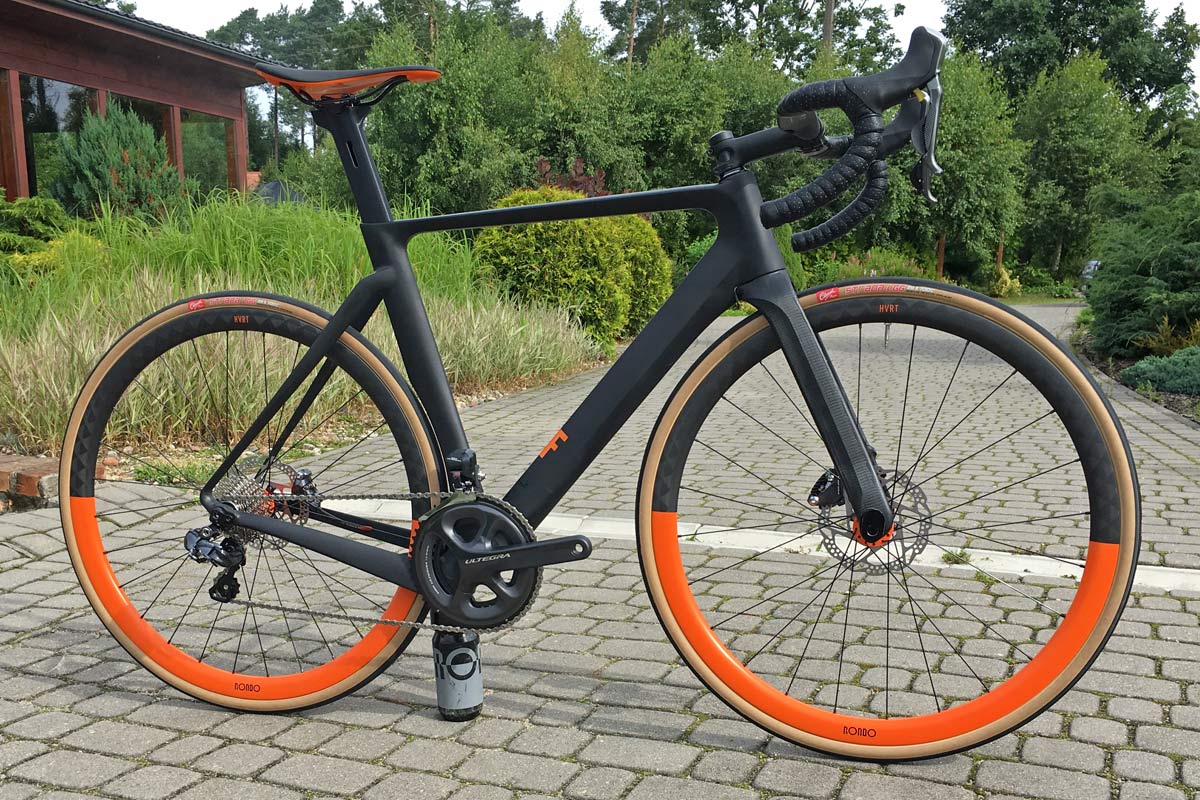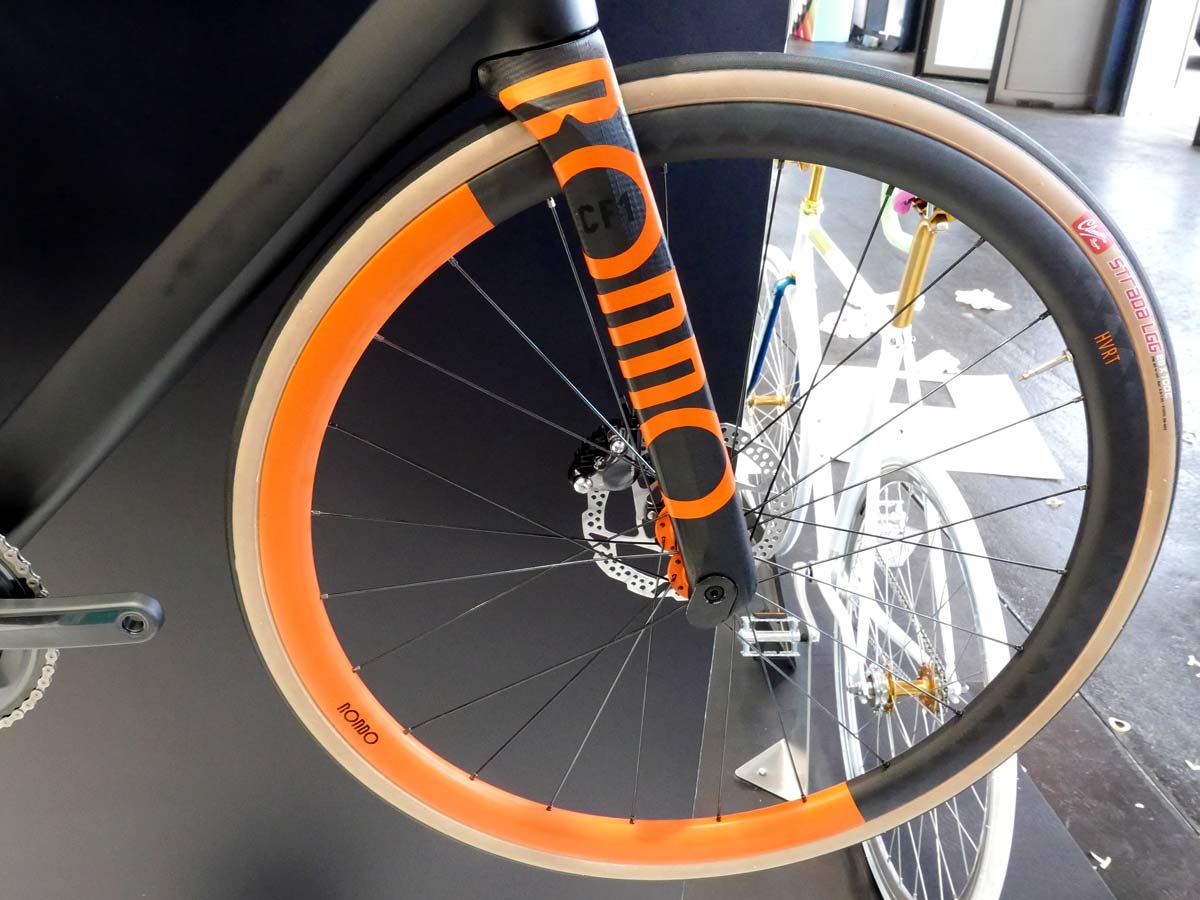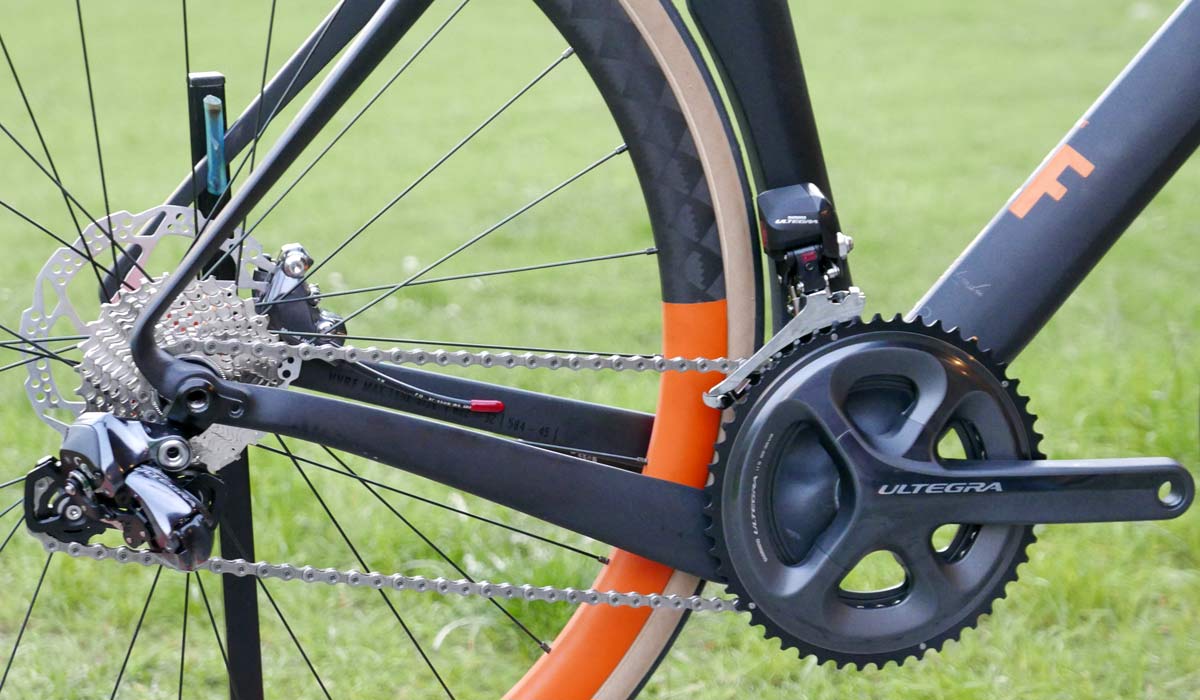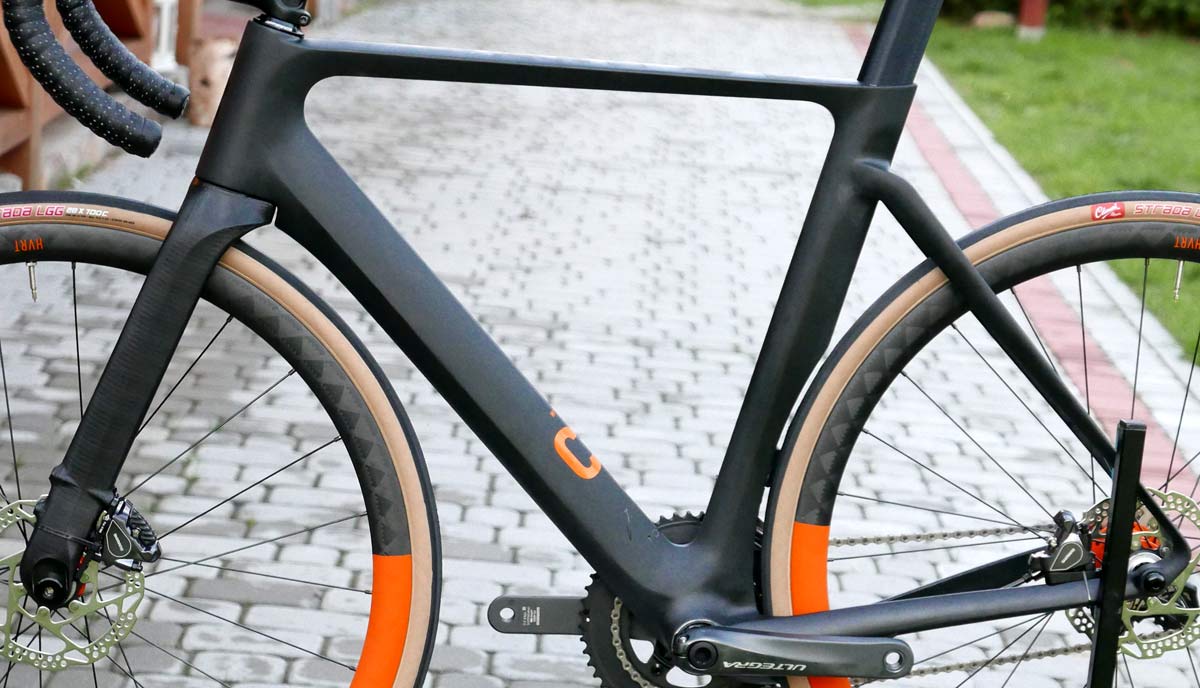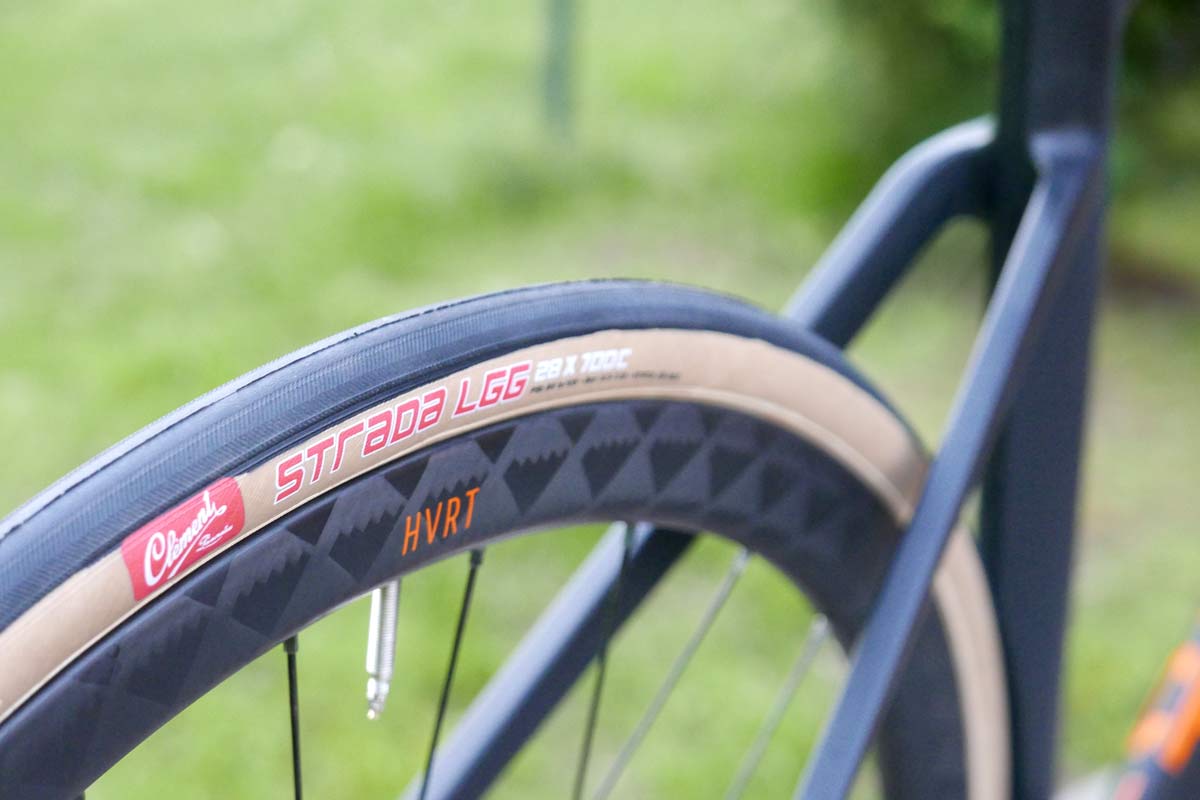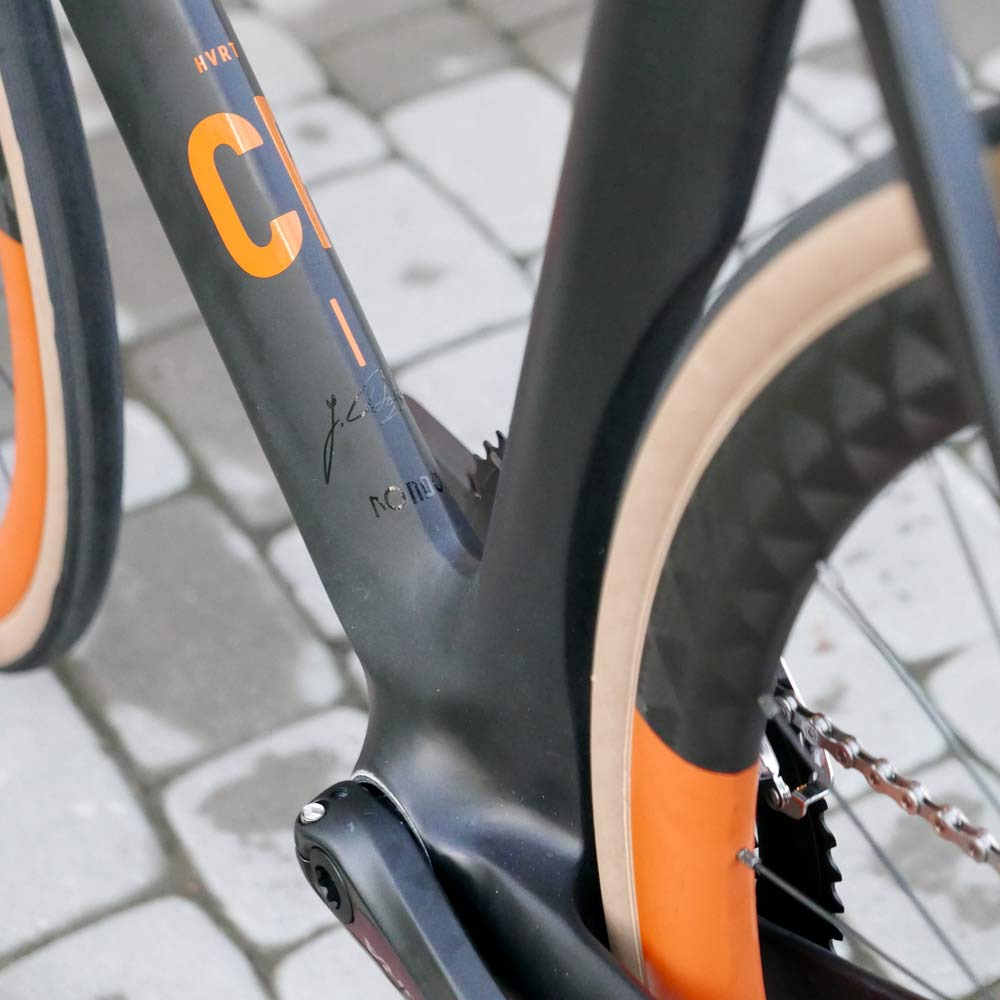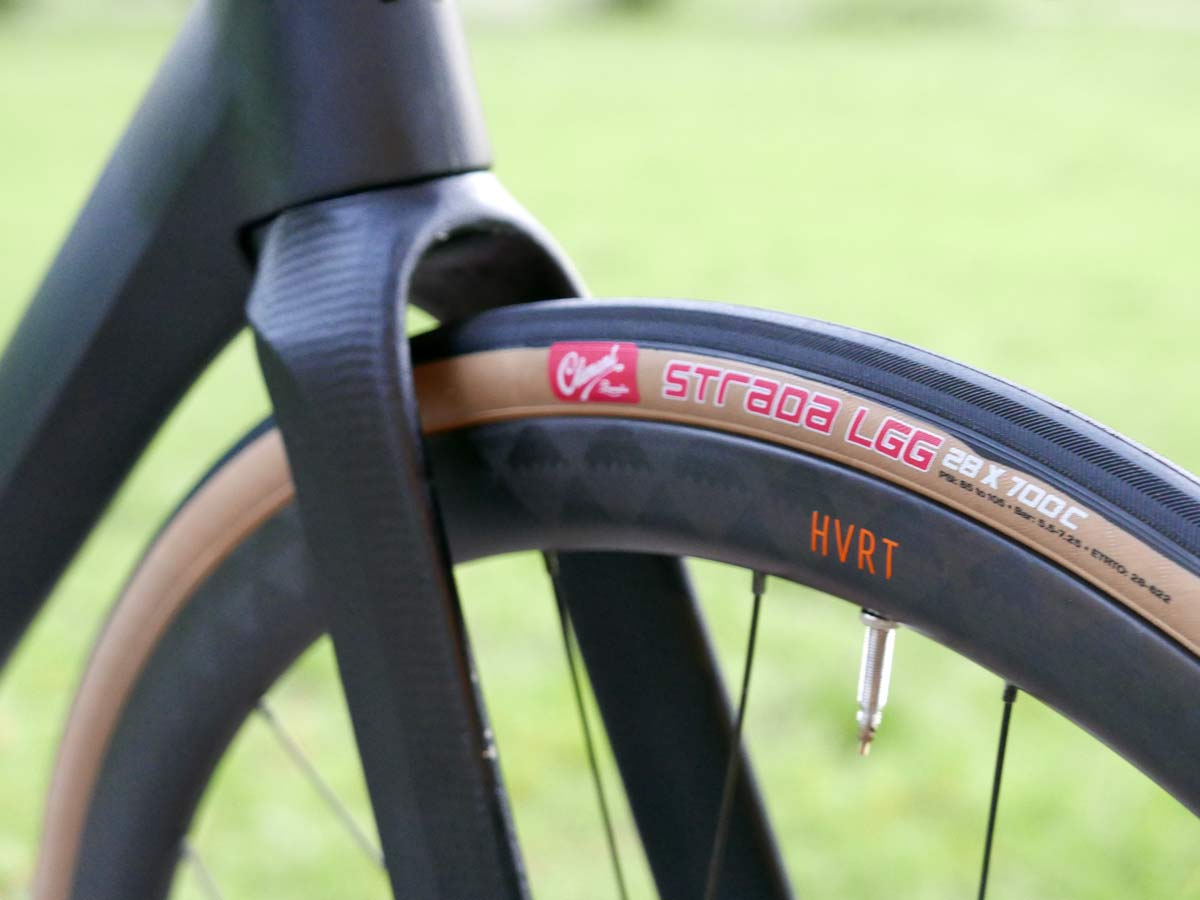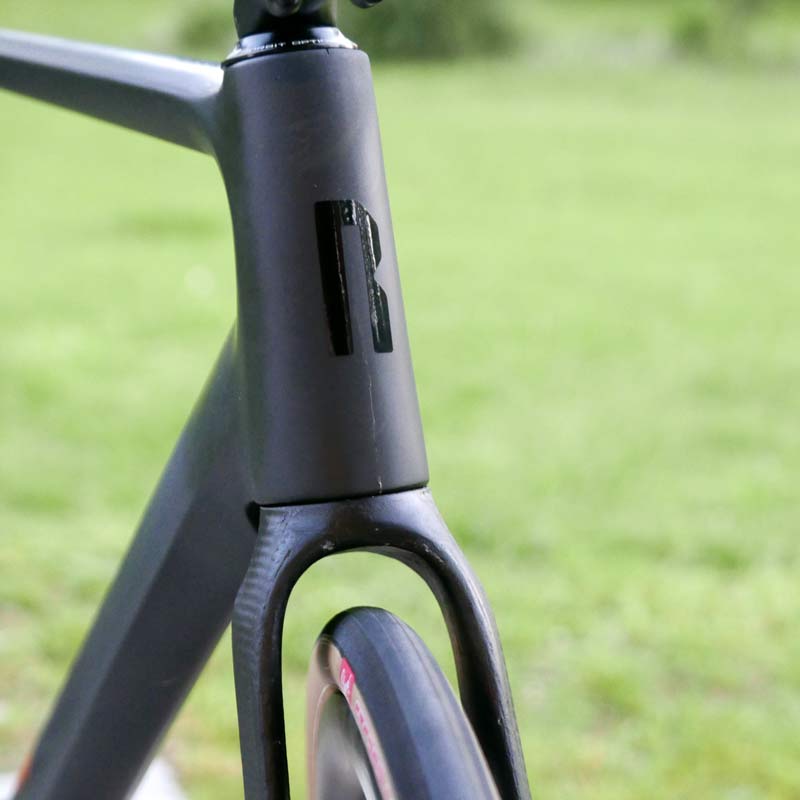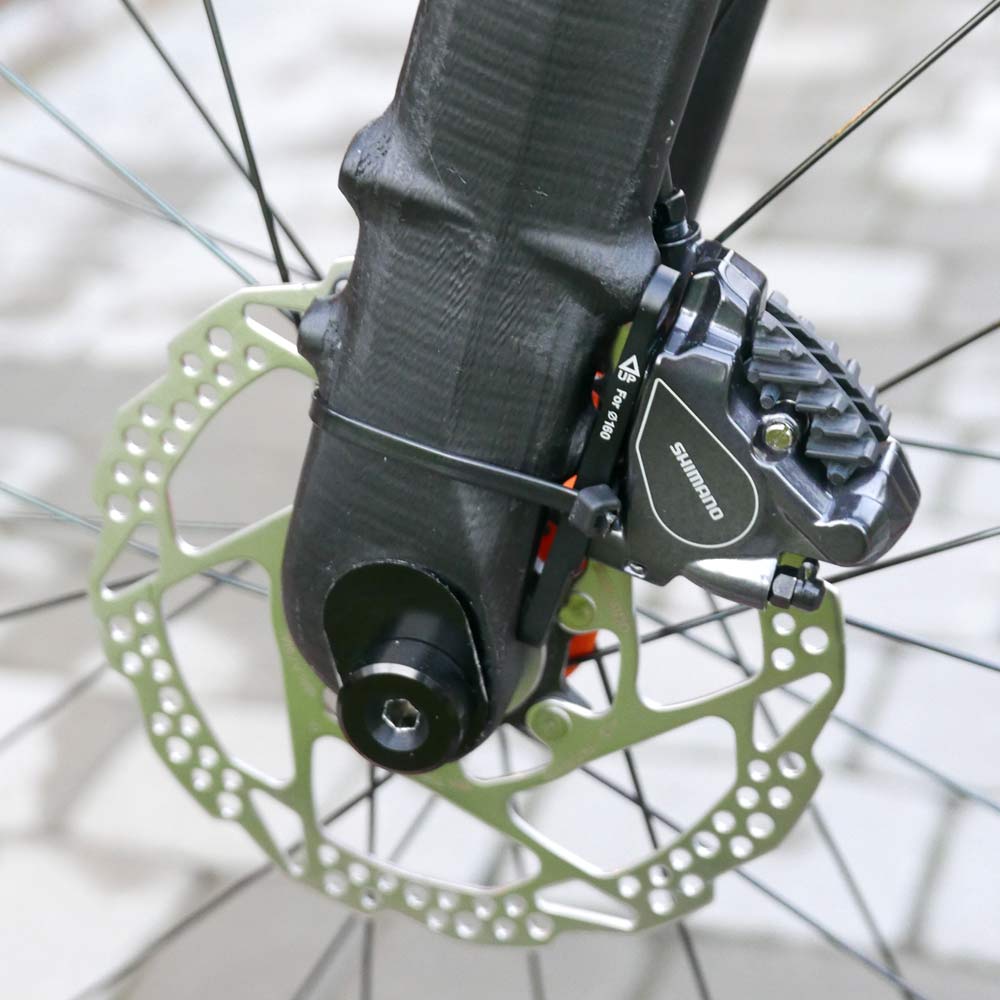It was only this past spring that we got an early look at the unique adjustable geometry/fork flip chip Ruut gravel bikes of Polish bike company Rondo. But gravel isn’t the only riding Rondo is into. So when the guys want to put the hurt into each other racing on the road they needed another new bike. Not satisfied to ride a compromised bike from some other company, they set out to develop their own. What they came back with is the Rondo Hvrt, an aero road bike designed around a minimum 28mm tire, with the same adjustable chip in the fork tip that lets you tune the ride to fit your style of racing. It’ll even fit much bigger tires to train through all seasons.
Rondo Hvrt CF1 adjustable carbon road bike
When we sat down with Rondo they talked about their vision for both gravel and road bikes. “The future is beyond Tarmac.” That seemed to be a philosophy born out of their location and style of riding in northern Poland. The area north of Gdansk is littered with rolling hills and lots of quiet roads.
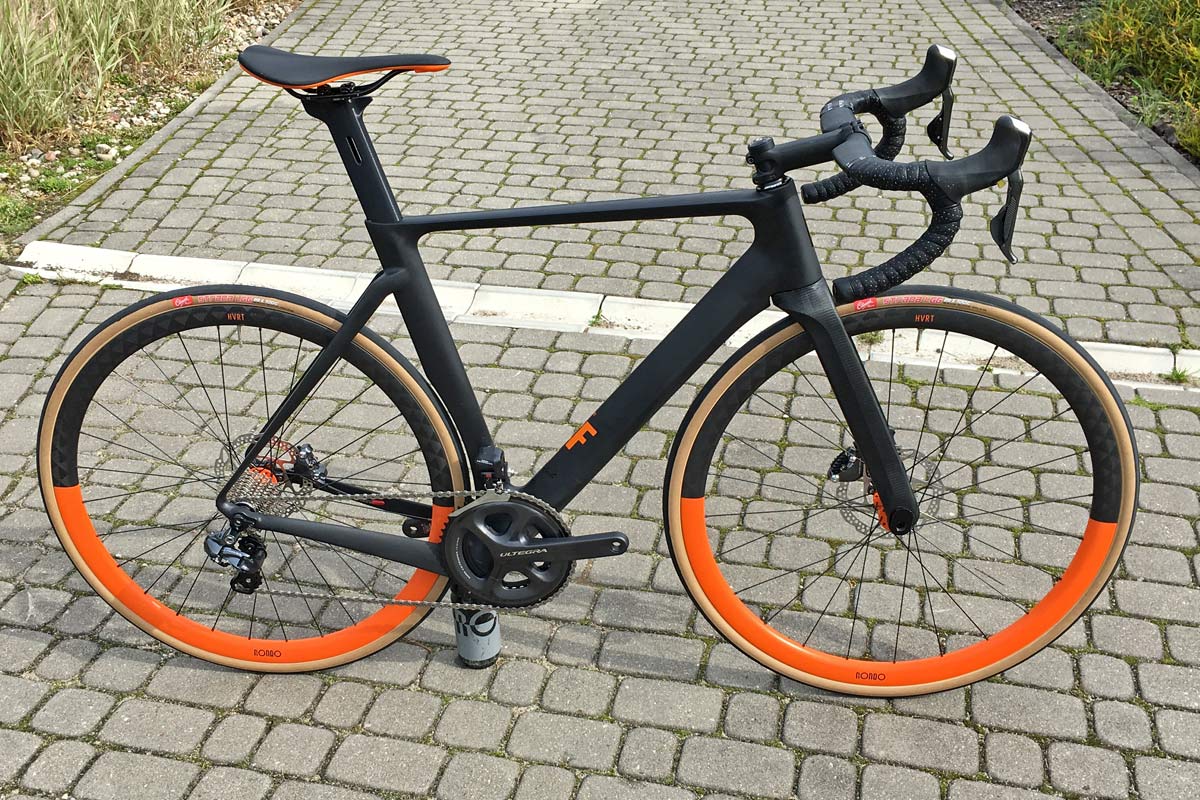 But very often asphalt disappears into dirt, so while their gravel bikes are made to head properly off road, even this new aero road race bike was designed to fit fatter road tires to take on whatever road surface lurks around the corner.
But very often asphalt disappears into dirt, so while their gravel bikes are made to head properly off road, even this new aero road race bike was designed to fit fatter road tires to take on whatever road surface lurks around the corner.
Tech details
It is still meant as a proper road racing bike. They call is an aero road+ race bike. That means starting with a regular road double drivetrain, disc brakes, 12mm thru-axles, and then of course fat road tires.
Of course aero is all about integration and clean lines. The Hvrt gets a lot of features we see across aero race bikes, just scale up to work with bigger wheels.The fork legs sweep into a sculpted fork crown, which transitions into an aero shaped downtube. A mostly horizontal toptube narrows to an integrated seat clamp around the aero seatpost, and ticked inside an airfoil seattube.
Rondo really began with something like a 700c x 28mm road tire, wide set stays, and went from there.
Size them up to 33mm before things start to get tight out back, even into a deep cut seattube, bottom bracket, and asymmetric chainstays.
Or drop down to 650B wheels and 1.9″ (47mm) tires will still comfortably squeeze in.
Up front the bike gets a super low profile aero bladed fork.
At the bottom the Hvrt gets the same Twintip fork concept that was found on the Ruut gravel bike. With a thru-axle flip chip you basically get to choose between two different geometries to suit a range of riding styles or road surfaces. Like on the Ruut, it is something of which mindset a rider falls into as to whether they opt for the fast or faster setup, feeling the difference even more on the Hvrt road bike than on the gravel Ruut.
The character difference between the two settings isn’t so extreme, but does a decent job at helping a rider set their ideal position. Dropping the fork gives about 5-6mm more reach, 10mm less stack, and ~12mm more trail.
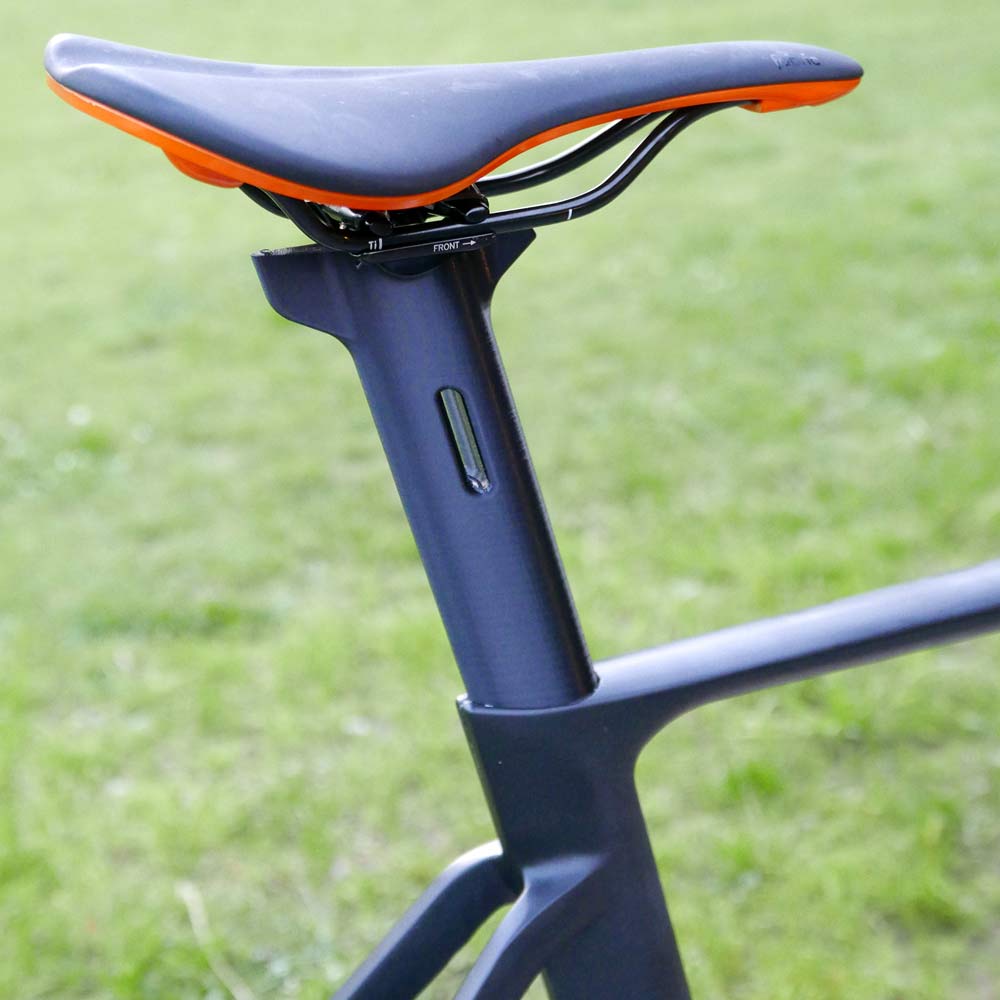 The Hvrt uses a deep aero seatpost, so Rondo gave it a pierced seattube. After Fighting to get race numbers and tail lights to stretch around deep posts, one of the Rondo engineers’ wife said “why don’t you put a hole in it?” It makes accessories easy to mount and doesn’t affect the ride or aerodynamics.
The Hvrt uses a deep aero seatpost, so Rondo gave it a pierced seattube. After Fighting to get race numbers and tail lights to stretch around deep posts, one of the Rondo engineers’ wife said “why don’t you put a hole in it?” It makes accessories easy to mount and doesn’t affect the ride or aerodynamics.
Like the gravel bike, the new Hvrt is set to be developed into carbon, aluminum, and steel variations of this carbon bike. Availability is still a ways off with this bike still only sporting a 3D printed fork. But pricing target seem to be already set. This top level Hvrt CF1 with Rondo carbon wheels and Ultegra di2 is aiming for 5600€. A cheaper build with the same carbon frame and 105 could bring that down to 3100€, with the carbon frameset alone available for 2300€. A steel Hvrt ST with a 105 hydraulic build hopes to sell complete for the same price as the carbon frameset, while an alloy Hvrt AL with cable operated discs & Tiagra could even bring the price down to 1600€ while keeping the same fit & geometry adjustability.
The Hvrt’s idea is: Ride anywhere. All the time.
We can get behind thinking like that.
